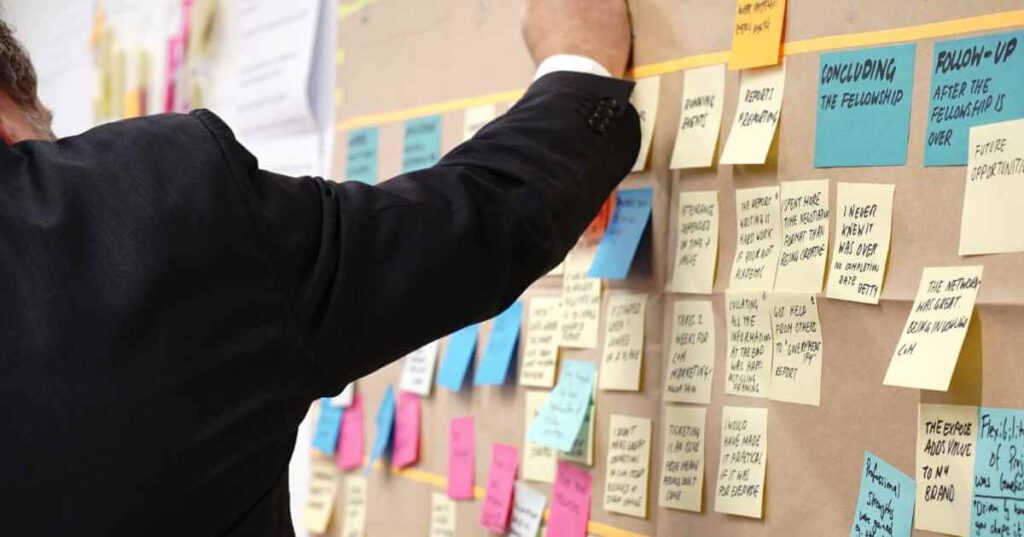The Seven Steps Involved In Product Management

Image Resource: unsplash.com
Thank you for reading this post, don't forget to subscribe!Managing interdisciplinary teams to research, create, and release products that fulfil consumer needs is the primary responsibility of the product management position. Product managers demand strong business judgement, UI and UX design expertise, and solid marketing knowledge in addition to technical awareness and the ability to gather user requirements. The duties associated with product management differ among industries and organisations, and they heavily rely on the size of the business. However, the good news is that you’ll learn these skills in a shorter amount of time if you enrol in pmschool.io.
In smaller companies, the product manager could be in charge of every stage and take a more active role in the development. The product manager oversees the process from a greater level and manages the interaction between different teams in larger businesses with multiple products under development where there may be specialised teams handling each phase of the process. Product managers must handle increasingly complicated environments in large enterprises with many competing interests in order to win over numerous stakeholders and satisfy consumer expectations.
Regardless of the situation, product managers are ultimately in charge of creating successful products, and to do so, they must have a thorough understanding of both the product and the market. Processes for managing products might differ from one business to another. However, to succeed in product management, you can structure your strategy around these seven stages:
1. User Research & Market Research:
For your business and your product to succeed, market research is crucial. It enables you to ascertain market conditions, competition activity, business trends, and any possible gaps your product may fill. It also helps in recognizing risks and devising countermeasures, as well as openings and the best methods to take advantage of them.
2. Managing Ideas:
You may begin developing the solutions after you have a general understanding of the market environment and the wants of your clients. But it goes much beyond simple brainstorming. You must take a methodical approach to it. Utilise the opportunity-solution tree and go through each opportunity’s solutions carefully. Consider how you will test each of these. Prioritise the concepts that will provide the greatest value at each stage.
3. Technical Details:
It is necessary to convert the concepts gathered during product discovery and market research into technical requirements. The product manager collaborates with the product owner, project manager, and scrum master to create a list of specifications and translate them into user requirements.
4. Roadmapping:
Avoid creating a roadmap that is too detailed. Use it to communicate the product concept and your strategic and commercial goals rather than concentrating on individual features. You will have greater future flexibility with such a strategy. Focusing on the overarching goals and your North Star measurements shows that you are aware of the direction the product is going but also that you are aware that there may be other approaches.

Image Resource: unsplash.com
5. Categorization:
It’s time to evaluate your high-level objectives now that you have established them and created a backlog of potential solutions. Which tools and strategies you use for prioritising will be determined by the product design stage and the process you follow. Regardless of the strategy you go upon, be sure to include the important stakeholders and give them a voice. In general, the goal is to give priority to those solutions that will benefit users the most and get your team one step closer to attaining the company’s goals.
6. Development Of Products:
The framework, which is the essential component of the product, is developed at this step. The essential participants are the programmers, who may have contributed to the process of creating technical requirements. Members of the same multidisciplinary team who work in agile teams do both development and testing. This facilitates speedier release cycles and helps them avoid delays brought on by handovers. Product managers are busy organising the launch of their products while developers are busy writing code.
7. Release of the Product, gathering consumer feedback, and modifications:
The team’s first goal is to finish developing and releasing your product. Data on user behaviour and comments from the product’s users may be used to prioritise future features and guide their development. The most brilliant ideas often originate in this stage. However, take your time releasing the product. Although it may be tempting to launch as soon as possible, be sure your minimal viable product is really feasible and provides some value.
